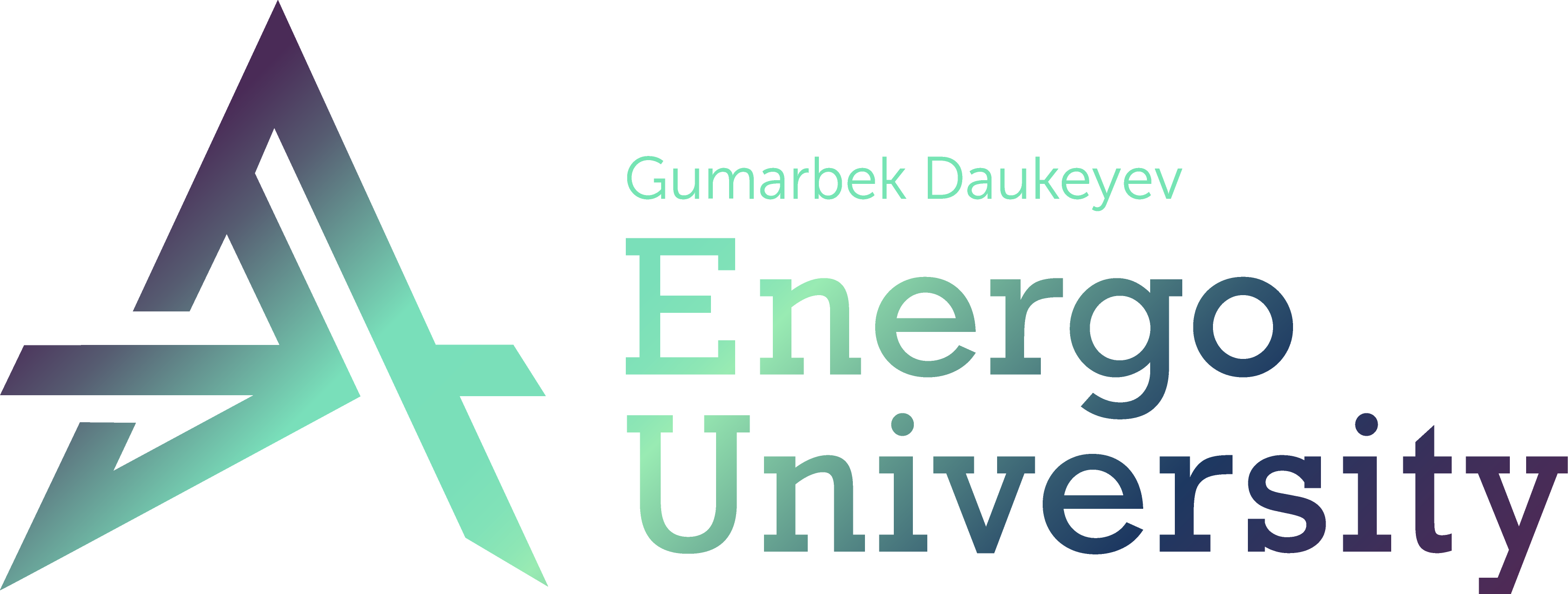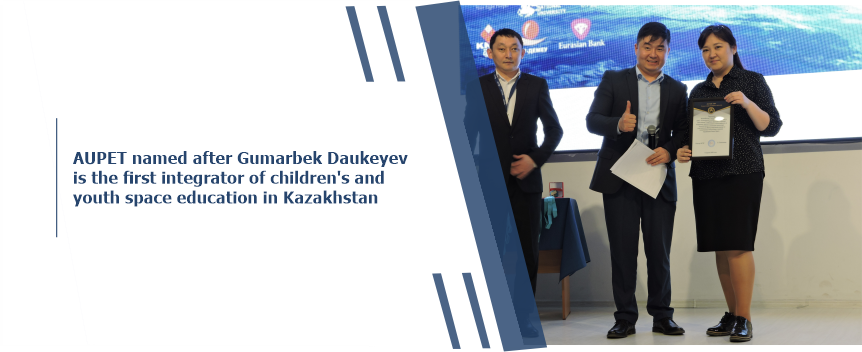11.04.2022 All news
On April 9, 2022, the Kazakhstan Smart Space International Competition ended at the Almaty University of Power Engineering and Telecommunications named after Gumarbek Daukeyev. The serious potential of the Institute of Telecommunications and Space Engineering in the integration of children's and youth space education in Kazakhstan was revealed. The key point in understanding this was the holding of the round table "Children and Space", where some cases were presented, namely: 1) UniSat (UNICEF), 2) Engineers of the Future (Russia); 3) On duty on the planet (Russia) 4) School space telescope (Russia); 5) Companion of my school (Russia).
At the end of the Kazakhstan Smart Space International Competition, it became clear that it is possible to competently develop children's and youth space education in Kazakhstan. To do this, it is necessary to massively train schoolchildren and students to design, assemble and launch cheap nanosatellites, as well as teach them to analyze the data obtained from these devices. The next stage of development is the introduction of courses on the study of collective artificial intelligence, so that students can create small groups of nanosatellites that would be able to self-organize and jointly solve complex problems in space. Such a promising trajectory of development in children's and youth space education is more than realistic in the near future. Only in AUPET named after Gumarbek Daukeyev there is simply the widest range of opportunities for this.
Space ecosystem of Kazakhstan
Important tasks in the field of peaceful space exploration by Kazakhstan were discussed at the round table. “Our country plans to enter the launch business at Baikonur, as well as fully unlock the tourism potential of the cosmodrome,” said Mubarak Zhandos, manager of the research project “Prospects for the use of the Baikonur cosmodrome”. He noted in his report that only 3 out of 18 launchers remained. Such degradation is associated not only with increased competition from the United States, Europe and China, but also speaks of fundamental changes in Russia's space policy. Therefore, Kazakhstan has the opportunity to become one of the leading space powers. Thus, Alan Kazkenov, Deputy Chairman of the Aerospace Committee, in his report outlined the main directions in the development of the domestic space industry. “These are research and development, design, testing, launches and delivery of products and services. Today, 7 enterprises of the industry work with us. They are located in Baikonur, also in Nur-Sultan and Almaty. Now we are thinking about creating SpaceTech, on the basis of which universities, research centers, enterprises, professional and public organizations could be united into a single ecosystem,” he said.
The collective mind of nanosatellites
Some Russian speakers focused on space science and the practical side of the industry.
“Today the world is trying to switch to nanosatellite constellations that will perform the tasks of remote sensing of the Earth and provide communication,” said Ivan Zavyalov, associate professor at the Department of Applied Mechanics at MIPT. - For this, software systems are needed that will simulate their behavior and control algorithms. Nanosatellites are of interest to businesses and universities, as they have a low cost and high operational speed of deployment in orbit.
Founder and Chairman of the Board of Directors of the Group of Companies "Knowledge Genesis" Petr Skobelev paid attention to artificial intelligence in his report. “Our company is engaged in the creation and implementation of a new class of artificial intelligence - emergent (collective) intelligence. There is a theory that ants, termites, bees and wasps are the "neurons" of the collective mind. An individual ant is primitive, but acting together, ants solve complex problems. And this new direction in artificial intelligence has huge potential for the industry,” he said.
These two reports show that the space industry is moving to a new level. The task of creating constellations of nanosatellites rests on a whole block of issues that directly concerns emergent intelligence.
Children's and youth space education
UNICEF Innovation Coordinator Raushan Ibrasheva and Scientific Supervisor of the All-Russian open project to launch the school satellite "School Space Telescope" Sergey Nedelko shared their real experience in the development of children's and youth space education. Raushan Ibrasheva noted that the Central Asian UniSat program contributed to the disclosure of the intellectual potential of 2,000 girls and young women in the design, assembly and launch of nanosatellites. “When they see the end result, it inspires them a lot. Our girls have assembled, tested and launched 5 nanosatellites into the stratosphere. These devices collect data that helps in research work,” she said.
Sergey Nedelko made a presentation "How to organize a space club". He told how he developed children's space education in the city of Slavyansk-on-Kuban. “We started with the project “Sputnik of our school”. It was a very interesting project for the guys. We assembled a telemetry system and made antennas from improvised means to receive signals from satellites. We then analyzed the data and determined the coordinates of illegal landfills and landfills. Such experience is available for implementation in every school,” he said.
The winners have been determined
After the round table, the awarding ceremony for the teams of participants in the Kazakhstan Smart Space International Competition was held. “In recent years, I have noticed that young people are losing interest in space. All kinds of events create a negative attitude towards the industry. Our competition is a positive step. We hope that the competition will inspire children to great achievements in the peaceful exploration of outer space. And I would like to separately address the guys who did not receive prizes: we are waiting for you next year! The doors of our university are always open to everyone who is thirsty for knowledge and ready to dare in the name of science!” said Kuanysh Alipbayev, director of the Institute of Telecommunications and Space Engineering.
The jury distributed the prizes as follows:
Nomination “Layout”
6-12 years old
1. Team from Kyzylorda;
2. Gymnasium No. 103;
3. School number 48.
13-16 years old
1. Mukhamedzhanov Abylaikhan;
2. School No. 78;
3. Nazarbayev Intellectual School (Taldykorgan).
17 years and older
1. ENU.
Nomination “Working model / product / video”
6-12 years old
1. School No. 48;
2. Team from Atyrau.
13-16 years old
1. Nazarbayev Intellectual School of Physics and Mathematics and their project “Delta-2”;
2. Nazarbayev Intellectual School of Physics and Mathematics and their project “Samam”;
3. Team from Kaliningrad.
17 years and older
1. KazNU;
2. KazNRTU;
3. AUPET.
Nomination “Research project”
13-16 years old
1. Quantum team;
2. Gymnasium named after A.M. Gorky;
3. School-Lyceum No. 8.
17 years and older
1. AUPET;
2. Shymkent University.

